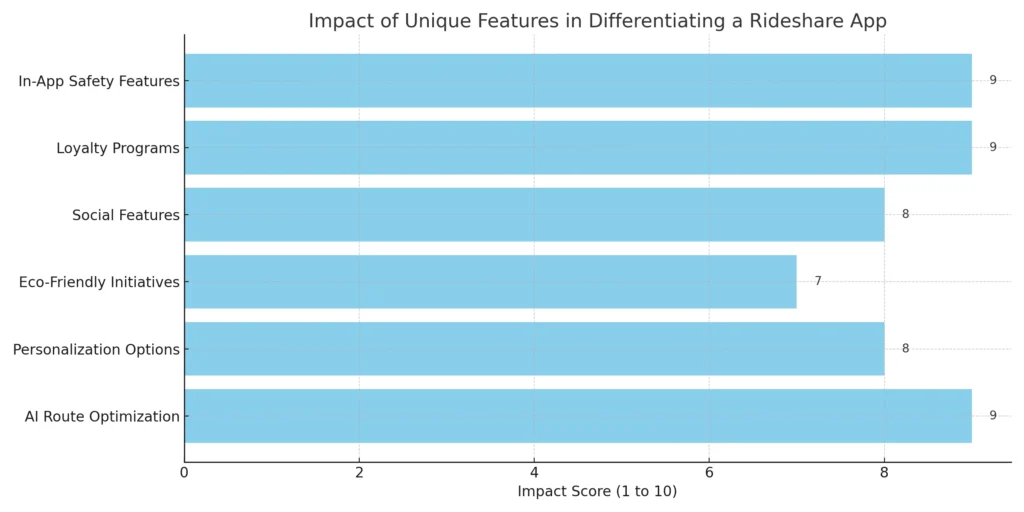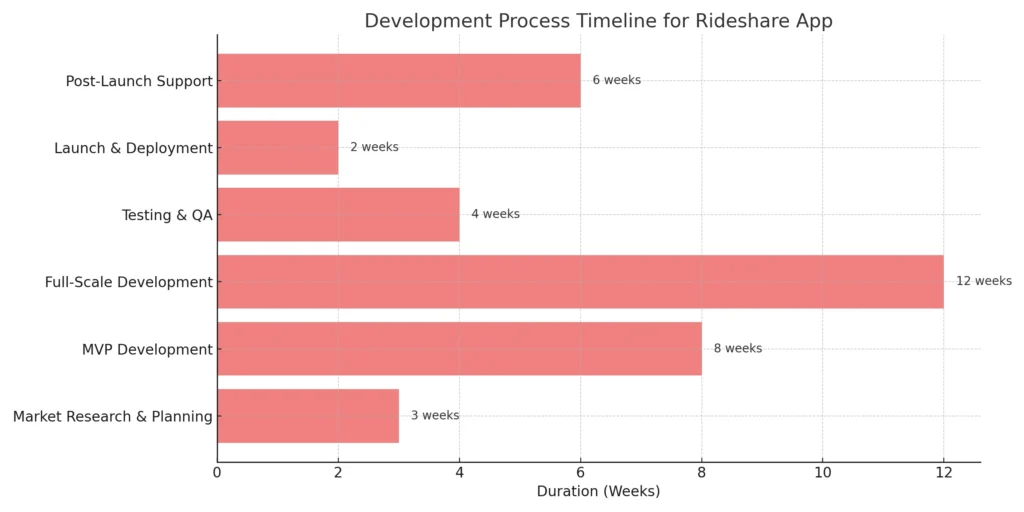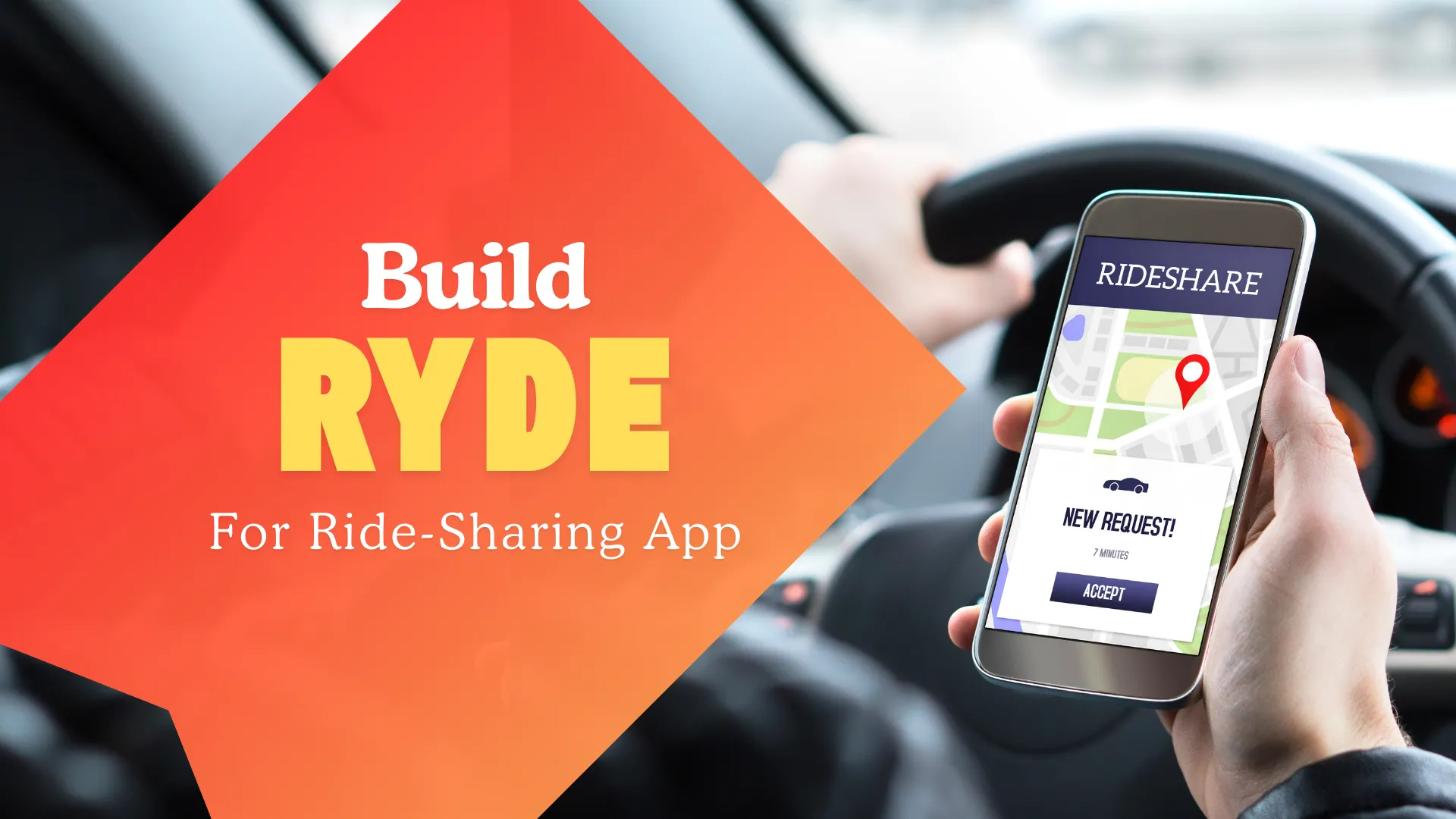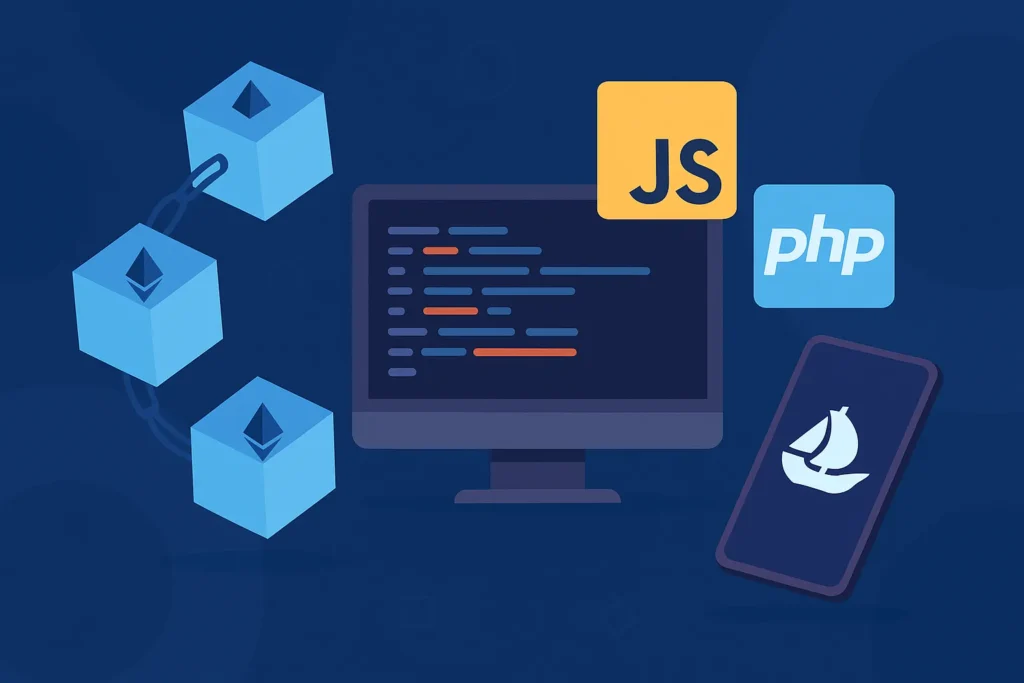In today’s fast-paced world, ridesharing has revolutionized the way we travel. Apps like Ryde have made commuting not only convenient but also affordable. By connecting passengers with drivers, rideshare platforms provide a flexible transportation solution that helps reduce traffic congestion and lowers travel costs. As urban areas grow and the demand for efficient mobility increases, building a rideshare app has never been more relevant.
Creating a rideshare app like Ryde offers a unique opportunity to tap into a thriving market. With consumers seeking more cost-effective alternatives to traditional taxis and public transport, a well-designed rideshare app can meet these needs while promoting eco-friendly travel. The potential to enhance user experiences with features like real-time tracking, ride-sharing options, and loyalty programs can set your app apart in a competitive landscape.
This guide will walk you through the essential steps needed to build a successful rideshare app, covering everything from key features and technology requirements to cost estimates and marketing strategies. Let’s dive into how you can turn your idea into a profitable venture that transforms urban mobility!
What the App Is and What It Does
A rideshare app like Ryde connects passengers with drivers, allowing them to share rides and costs for greater convenience. The primary goal of such an app is to facilitate smart commuting, making it easier for users to find transportation quickly while offering drivers the chance to maximize their earnings.
How It Works
- Real-Time Matching: When a user requests a ride, the app instantly connects them with nearby drivers, ensuring minimal wait times. This feature enhances user satisfaction by providing a quick and efficient way to secure a ride.
- Route Optimization: The app calculates the most efficient routes for drivers, allowing them to pick up multiple passengers traveling in the same direction. This not only reduces travel time but also increases the number of rides a driver can complete in a given timeframe.
- Cost Sharing: Passengers can choose to share their ride with others headed in the same direction, splitting the fare to make travel more affordable. This feature promotes social interaction and encourages users to opt for a more economical travel solution.
Key Benefits
- Affordability: Users save money compared to traditional taxi services, making rideshare apps a more attractive option for daily commutes.
- Convenience: The ease of booking rides through a mobile app provides users with greater flexibility and control over their transportation choices.
- Environmental Impact: By facilitating shared rides, the app contributes to reducing the number of vehicles on the road, thus helping to lower carbon emissions and alleviate traffic congestion.
Why Build This App?
Building a rideshare app like Ryde offers a unique opportunity to capitalize on the growing demand for convenient transportation solutions. As urban populations expand and commuting needs evolve, the necessity for affordable and efficient travel options becomes increasingly apparent. Here are several compelling reasons to invest in a rideshare platform:
1. Rising Demand for Affordable Transportation
Many people are seeking cost-effective alternatives to traditional taxis and public transport. A rideshare app can provide users with lower fares through shared rides, making it an attractive option for budget-conscious commuters. By addressing this demand, your app can quickly gain a loyal user base.
2. Profit Potential Through Multiple Revenue Streams
Rideshare apps can generate income through various channels, including ride commissions, subscription models, and in-app advertising. This diverse approach ensures a steady flow of revenue and financial sustainability. With the right marketing strategies, your platform can become profitable in a short time.
3. Opportunity for Market Disruption
Despite the presence of established players, many urban areas still lack efficient rideshare options. By launching a rideshare app, you can tap into these underserved markets and introduce innovative features that set your service apart.
4. Promotion of Sustainable Mobility
With an increasing focus on environmental sustainability, a rideshare app contributes to reducing carbon emissions by encouraging shared rides. This aligns with global trends towards greener transportation solutions, making your app not only a business opportunity but also a socially responsible choice.
5. Enhanced User Experience and Community Building
A rideshare platform fosters a sense of community among users, allowing them to connect with others in their area. By prioritizing user engagement through loyalty programs and social features, your app can create a loyal customer base that feels invested in your platform.
What Can I Do to Differentiate It?
In the competitive landscape of ridesharing, creating an ride hailing or ride sharing app that stands out requires innovative features and strategic differentiation. Here are some effective strategies to set your rideshare platform apart from the competition:
1. Advanced AI-Powered Route Optimization
- Implement AI algorithms to analyze traffic patterns and user behavior, ensuring that routes are not only efficient but also adaptable to real-time changes. This reduces travel time and enhances user satisfaction.
2. Personalization Options for Riders
- Allow users to customize their ride experience by choosing preferences such as quiet rides, preferred music genres, or specific driver ratings. This personal touch fosters a deeper connection between the user and the service.
3. Eco-Friendly Initiatives
- Promote sustainable practices by offering carbon offset programs or incentives for users who choose to share rides. This not only attracts environmentally conscious users but also positions your app as a responsible choice in the market.
4. Social Features for Community Engagement
- Introduce social features that allow riders to connect, share experiences, or organize group rides to events. Creating a community aspect encourages user loyalty and word-of-mouth referrals.
5. Loyalty and Rewards Programs
- Develop a robust loyalty program that rewards users for frequent rides, referrals, or sharing rides with others. This incentivizes continued use of the app and helps build a committed user base.
6. In-App Safety Features
- Prioritize user safety with features like real-time ride tracking, emergency contact alerts, and thorough background checks for drivers. Ensuring user safety will not only build trust but also enhance your app’s reputation.

Market Size, Growth, and Business Model
The ridesharing industry is experiencing tremendous growth, driven by the increasing demand for convenient, affordable, and sustainable transportation solutions. With more people opting for rideshare platforms to avoid the hassle of owning a vehicle, the market opportunity is expanding rapidly.
Market Size and Growth Potential
- The global ridesharing market is projected to reach over $200 billion by 2030, growing at a significant annual rate.
- Urbanization, rising fuel costs, and environmental awareness are pushing consumers towards ride-pooling and shared mobility solutions.
- Emerging markets in Asia, Latin America, and the Middle East offer immense potential as urban populations grow and public transport remains limited.
Business Model Breakdown
A well-designed rideshare app can tap into multiple revenue streams, ensuring steady profitability.
- Commission-Based Model
- Earn a percentage from every completed ride. This ensures a consistent revenue stream that scales with usage.
- Subscription Plans
- Offer premium features to users and drivers through monthly or annual subscription models. Examples include priority booking and discounts on rides.
- In-App Advertising and Promotions
- Partner with local businesses to display non-intrusive ads or run exclusive offers for users.
- Transaction Fees from Payments
- Earn small fees from digital wallet or payment gateway transactions processed within the app.
| Business Model | Description | Profitability Potential | Impact on User Experience |
|---|---|---|---|
| Commission-Based Model | Charge a percentage from each completed ride. | High – Scales with usage. | Low – Minimal impact, users pay a small fare fee. |
| Subscription Plans | Offer premium plans for drivers or riders with perks like discounts. | Moderate – Recurring revenue. | High – Improves user loyalty with added benefits. |
| In-App Advertising | Display targeted ads or partner offers within the app. | Moderate – Depends on partnerships. | Medium – Ads must be subtle to avoid disruption. |
| Transaction Fees | Earn small fees from digital wallet or payment gateway transactions. | High – Increases with app adoption. | Low – Convenient payment options enhance experience. |
Features of the App
A rideshare app like Ryde needs to be packed with essential and user-friendly features that cater to riders, drivers, and administrators. By ensuring smooth coordination between all stakeholders, your platform will deliver an exceptional experience and stand out in the market. Below is a breakdown of the key features:
User-Side Features
- Real-Time Ride Booking: Users can instantly book rides and get matched with the nearest drivers.
- Live Ride Tracking: Provides real-time updates on driver location and estimated time of arrival.
- Fare Estimator and Payment Options: Offers upfront pricing and multiple payment options, including digital wallets and credit cards.
- Ride Preferences: Allows users to set preferences, such as quiet rides or air-conditioning settings, to enhance comfort.
- Rating and Feedback System: Users can rate drivers and provide feedback to maintain service quality.
Driver Features
- Flexible Scheduling: Drivers can log in and out based on their availability.
- Route Optimization: Intelligent navigation ensures multiple pickups on the same route for better efficiency.
- Earnings Dashboard: Displays daily, weekly, and monthly earnings, helping drivers track income.
- In-App Communication: Direct chat with passengers for easier coordination.
Admin and Management Features
- Analytics Dashboard: Provides insights into user behavior, ride patterns, and revenue trends.
- Driver and User Management: Helps manage profiles, resolve disputes, and monitor performance.
- Compliance Tools: Ensures all services adhere to local laws and regulations, including safety protocols.
Technical Requirements
Creating a rideshare app like Ryde demands a robust technical foundation to ensure smooth operations, secure transactions, and a seamless user experience. The right technology stack guarantees performance, scalability, and reliability, even during peak usage. Here’s a breakdown of the key technical components.
Backend and Database
- Backend Framework: Use Node.js or Django for efficient processing of ride requests, payments, and user data.
- Database: Choose MongoDB or PostgreSQL to securely store user profiles, trip details, and transaction records.
Frontend Development
- Cross-Platform Frameworks: Utilize Flutter or React Native to develop apps that perform smoothly on both Android and iOS.
- User Interface Libraries: Integrate modern UI elements to create a visually appealing and easy-to-use interface.
API Integrations
- Payment Gateways: Use Stripe, PayPal, or Razorpay to offer diverse and secure payment options.
- Maps and Navigation: Integrate Google Maps API for accurate route planning and real-time tracking.
- Communication Tools: Use Twilio or Firebase to power in-app messaging and notifications between drivers and passengers.
Cloud Hosting and Security
- Cloud Platform: Host the app on AWS or Google Cloud to ensure scalability and availability.
- Content Delivery Network (CDN): Use Cloudflare to enhance loading speeds and ensure smooth access across regions.
- Security Protocols: Implement SSL encryption and Two-Factor Authentication (2FA) to protect user data and transactions.
Performance Optimization and Analytics
- Crash Reporting Tools: Integrate Firebase Crashlytics or Sentry to detect and resolve issues promptly.
- Analytics Tools: Use Google Analytics or Mixpanel to track user behavior and monitor app performance, driving informed decisions.
Using Google Cloud ensures seamless scalability, enabling your app to handle growing user demand effortlessly (Google Cloud). Cloud infrastructure allows the platform to operate smoothly, even during peak times, while ensuring real-time data processing. This makes it easier to integrate new features and scale operations without compromising performance.
Considering launching your own on-demand ride service?
Get our step-by-step guide on developing a successful
platform for properties, vehicles, or equipment rentals.
Design and User Interface (UI/UX)
The design and user experience of your rideshare app play a crucial role in delighting users and ensuring seamless interaction. A visually appealing interface, combined with easy navigation, encourages frequent usage and loyalty. Below are the key design elements to focus on:
1. Clean and Minimalist Layout
- Keep the interface simple and intuitive, making it easy for users to book rides with minimal effort.
- Use clear icons, easy-to-read fonts, and a consistent color scheme to enhance visual appeal and usability.
2. Personalization for Better Engagement
- Provide customizable themes (light and dark modes) to enhance user comfort during different times of the day.
- Allow users to save their favorite routes, destinations, or drivers for faster bookings.
3. Smooth Navigation with Visual Cues
- Use real-time maps and tracking visuals to keep users informed about the ride status.
- Implement micro-animations to provide subtle feedback, such as a loading icon when booking or a visual transition between screens.
4. Driver and Passenger Communication Interface
- Design a dedicated in-app chat system for easy communication between drivers and passengers.
- Use visual indicators to notify users about driver arrival or any route changes in real-time.
5. Testing for Optimal User Experience
- Conduct usability tests with real users to identify areas for improvement.
- Use feedback loops to refine the design, ensuring the final version offers a frictionless experience.
Development Process
Building a rideshare app like Ryde requires structured planning and efficient execution to bring your vision to life. Each step in the development process ensures that the platform is functional, scalable, and ready to meet user expectations. Here’s a breakdown of the phases involved:
Step 1: Market Research and Planning
- Conduct thorough market analysis to identify trends and user expectations.
- Define the key features and functionalities that will set your app apart from competitors.
- Develop a roadmap with timelines for each phase of the project.
Step 2: MVP Development
- Focus on creating a Minimum Viable Product (MVP) with essential features such as ride booking, payments, and tracking.
- Launch the MVP to a small audience to gather user feedback and identify areas for improvement.
Step 3: Full-Scale Development
- Integrate advanced features, including AI-powered route optimization, in-app chat, and loyalty programs.
- Build separate interfaces for users, drivers, and administrators, ensuring smooth functionality across all levels.
Step 4: Testing and Quality Assurance
- Perform extensive testing, including functional, performance, and security tests, to ensure a bug-free experience.
- Conduct stress testing to ensure the app can handle high volumes during peak times.
Step 5: Launch and Deployment
- Submit the app to Google Play and Apple App Stores while ensuring compliance with their guidelines.
- Implement a soft launch to monitor initial user response and address any issues before the official launch.
Step 6: Post-Launch Support and Updates
- Use analytics tools to track user behavior and performance metrics.
- Roll out regular updates to introduce new features and address bugs, ensuring the platform stays competitive.

Cost Estimation and Timeframe
Building a rideshare app like Ryde involves strategic budgeting and planning to ensure efficient use of resources. The total cost depends on various factors, such as complexity, features, technology stack, and the development team’s expertise. Below is a detailed breakdown of the cost and timeframe for each phase of development:
Cost and Timeframe Breakdown
- Research and Planning
- Cost: $5,000 – $10,000
- Timeframe: 2 – 4 weeks
- This phase covers market research, defining features, and creating a development roadmap.
- MVP Development
- Cost: $15,000 – $30,000
- Timeframe: 8 – 12 weeks
- Focus on building a functional prototype with essential features to gather feedback.
- Full-Scale Development
- Cost: $40,000 – $70,000
- Timeframe: 12 – 16 weeks
- Integration of advanced features, UI/UX design, and seamless backend functionality.
- Testing and Quality Assurance (QA)
- Cost: $7,000 – $12,000
- Timeframe: 3 – 4 weeks
- Rigorous testing to ensure smooth operation and eliminate bugs.
- Launch and Deployment
- Cost: $5,000 – $10,000
- Timeframe: 2 weeks
- Submission to app stores, marketing campaigns, and user onboarding.
- Post-Launch Support and Updates
- Cost: $10,000 – $20,000 annually
- Ongoing: Continuous monitoring, feature updates, and technical support.
| Development Phase | Estimated Cost | Timeframe | Description |
|---|---|---|---|
| Research and Planning | $5,000 – $10,000 | 2 – 4 weeks | Market research, defining features, and planning the roadmap. |
| MVP Development | $15,000 – $30,000 | 8 – 12 weeks | Build a basic functional version to gather user feedback. |
| Full-Scale Development | $40,000 – $70,000 | 12 – 16 weeks | Integrate advanced features and design the full app experience. |
| Testing and QA | $7,000 – $12,000 | 3 – 4 weeks | Test functionality, performance, and security to ensure quality. |
| Launch and Deployment | $5,000 – $10,000 | 2 weeks | Submit to app stores and launch marketing campaigns. |
| Post-Launch Support & Updates | $10,000 – $20,000 annually | Ongoing | Continuous monitoring, maintenance, and feature updates. |
Monetization Strategies
To ensure your rideshare app not only thrives but also generates steady revenue, it’s essential to implement multiple monetization strategies. Below are some effective ways to turn your platform into a profitable venture.
1. Commission on Rides
- Charge drivers a small commission on every completed ride, ensuring a consistent revenue stream.
- This model allows the app to grow financially as more rides are completed on the platform.
2. Subscription Plans for Drivers and Users
- Offer subscription-based plans that provide exclusive benefits, such as lower commission rates for drivers or priority bookings for users.
- Subscription models create recurring income and foster loyalty among drivers and riders alike.
3. In-App Advertising and Partner Promotions
- Collaborate with local businesses to display targeted ads within the app. Ads can be strategically placed to remain non-intrusive while generating extra revenue.
- Promote exclusive deals from partners, enhancing the user experience while generating advertising income.
4. Transaction Fees from Digital Payments
- Charge small transaction fees for payments processed through the app, such as in-app wallets or credit card transactions.
- Encouraging users to make payments directly within the app increases opportunities to earn additional revenue.
5. Surge Pricing During Peak Hours
- Implement dynamic pricing to adjust ride fares based on demand. During peak hours or high-traffic times, fares can be slightly increased to boost earnings while ensuring more drivers are available.
Launching and Marketing the App
A well-planned launch and effective marketing strategy are crucial to building momentum and attracting users to your rideshare app. Here’s how to ensure your app stands out from the competition from the moment it goes live.
Pre-Launch Preparation
- Beta Testing: Release a limited version to a select group of users to identify bugs and gather feedback. Early testers also help spread the word about your app.
- Social Media Teasers: Build excitement by sharing countdown posts and sneak previews on platforms like Instagram, Twitter, and Facebook.
- Referral Programs: Encourage early adopters to invite friends by offering ride discounts for each referral.
App Store Optimization (ASO)
- Optimize your app’s title, description, and keywords to rank higher in app store searches.
- Use high-quality visuals such as screenshots and promo videos to attract more downloads.
Launch Campaigns and Promotions
- Offer Discounts or Free Rides during the launch week to encourage first-time users.
- Collaborate with local influencers or ride-hailing bloggers to promote your app to a targeted audience.
Post-Launch Engagement
- Push Notifications: Send timely alerts about new features, discounts, and upcoming events to keep users engaged.
- Loyalty Programs: Reward frequent users with points or discounts to encourage repeat usage and build long-term relationships.
Legal and Regulatory Considerations
Launching a rideshare app involves navigating through various legal and regulatory frameworks to ensure smooth operations and gain user trust. Here are the key areas to address to keep your app compliant and secure:
1. Licensing and Permits
- Obtain the necessary permits and licenses required to operate a ride-hailing service in the target market.
- Ensure all drivers meet local regulations, such as background checks and vehicle inspections.
2. Data Privacy and Security Compliance
- Implement GDPR or CCPA guidelines to protect user data and maintain transparency in handling personal information.
- Use encryption protocols to secure sensitive data, such as payment details and user profiles.
3. Driver Agreements and Employment Laws
- Clearly define the relationship between drivers and the platform, ensuring compliance with employment laws.
- Draft agreements that outline driver responsibilities, earnings structure, and working conditions.
4. Insurance and Liability Coverage
- Provide insurance coverage to protect both drivers and riders in case of accidents or unforeseen events.
- Ensure that liability policies are clear, outlining who is responsible for damages during a trip.
5. Payment Regulations and Financial Compliance
- Follow anti-money laundering (AML) and KYC protocols to ensure safe and legal financial transactions.
- Work with authorized payment gateways to meet compliance standards for in-app transactions.
Complying with GDPR regulations ensures that user data is handled transparently and securely (GDPR). Implementing privacy policies in accordance with these standards helps build trust with users and avoids legal complications. Ensuring data security is especially crucial in rideshare apps, as they handle sensitive information like payment details and personal locations.
Future Growth and Scalability
Building a rideshare app like Ryde is just the beginning. To ensure long-term success, it’s essential to focus on scalability and future growth strategies that allow your platform to adapt to changing market demands and expand seamlessly.
1. Expand to New Markets and Regions
- Identify high-demand urban areas or regions where shared mobility solutions are still emerging.
- Customize services to local markets, including language support, payment options, and specific regulatory requirements.
2. Introduce New Services and Features
- Add complementary services such as bike or scooter rentals or last-mile delivery options to diversify offerings.
- Continuously improve the app by integrating AI-driven recommendations based on user behavior.
3. Build a Scalable Infrastructure
- Host your app on cloud-based platforms such as AWS or Google Cloud to ensure smooth scaling as user demand grows.
- Use modular architecture so new features can be added easily without disrupting operations.
4. Leverage Data Analytics for Continuous Improvement
- Analyze user behavior and trip patterns to optimize routes, improve matching algorithms, and predict future demand.
- Use insights from analytics to personalize services, enhancing customer satisfaction and retention.
5. Establish Strategic Partnerships
- Collaborate with local transport providers, businesses, or environmental organizations to create bundled offers or shared promotions.
- These partnerships will open new revenue streams and enhance the app’s appeal to users.
Why Trust Miracuves Solutions for Your Next Project?
Choosing the right technology partner is critical to the success of your rideshare app. With Miracuves Solutions, you gain access to expertise, speed, and cost-efficiency, ensuring a smooth journey from concept to launch. Here’s why Miracuves Solutions is the ideal choice for your next project:
1. Proven Expertise in Mobility Platforms
- Miracuves Solutions has extensive experience in developing ride-hailing and multi-service apps.
- Our team specializes in AI-powered route optimization, seamless payment integration, and user-friendly designs.
2. Accelerated Development with Agile Methodology
- We complete projects 30 times faster than traditional firms, ensuring your app is market-ready on time.
- Our agile approach ensures quick adjustments, incorporating feedback efficiently at every stage of development.
3. Cost-Efficient Development Without Compromising Quality
- We offer up to 90% savings compared to the global average development costs.
- End-to-end solutions, from design to post-launch support, mean you won’t need to hire multiple vendors—we handle it all.
4. Scalable and Future-Ready Platforms
- Our solutions are designed to scale effortlessly as your business grows, handling increasing demand without hiccups.
- We provide modular updates so you can easily introduce new features and services over time.
5. Dedicated Support from Concept to Launch
- With 24/7 support, Miracuves Solutions ensures your app runs smoothly and stays ahead of the competition.
- We remain a long-term partner, helping your platform evolve with continuous updates and feature enhancements.
Conclusion
Building a rideshare app like Ryde is an exciting opportunity to redefine urban transportation and meet the growing demand for convenient and affordable travel solutions. With the right features, technology, and strategic approach, your app can deliver a seamless experience for both riders and drivers, while also making a positive impact on the environment through shared rides.
From planning and development to launch and beyond, each step is essential in ensuring the success of your platform. Partnering with Miracuves Solutions gives you a clear advantage by combining expertise, cost-efficiency, and speed, making your app stand out in the competitive market.
Now is the time to transform your idea into reality. With the right tools, support, and strategy, your rideshare app can become a profitable venture that evolves with market trends and creates real value for users.
Looking to build your own ride-hailing app like Ryde?
Our expert team can help you design and develop a seamless, user-friendly platform with real-time ride tracking, secure payments, and driver management.
FAQs
How much does it cost to build an app like Ryde?
The cost of developing a rideshare app like Ryde typically ranges from $50,000 to $100,000, depending on the features, design, and technology stack used.
How long does it take to develop a rideshare app?
Building a rideshare app takes 4 to 6 months, including the stages of research, MVP development, testing, and launch.
What are the key features of a rideshare app like Ryde?
Essential features include real-time ride booking, route optimization, in-app payments, live tracking, and a driver dashboard.
How can I monetize my rideshare app?
You can monetize your app through ride commissions, subscription plans, in-app advertising, and transaction fees from digital payments.
What technology stack is required for developing a rideshare app?
A typical tech stack includes Node.js or Django for the backend, Flutter or React Native for frontend, Google Maps API for navigation, and Stripe or PayPal for payments.
Check out our popular ride-sharing app solutions offered by Miracuves – built for flexibility, performance, and global reach:
- InDriver Clone Solution– A dynamic ride-hailing app where riders and drivers negotiate fares in real time, offering more control and transparency.
- Uber Clone Solution – A complete ride-sharing platform with GPS tracking, fare estimation, driver management, and seamless payments.
- Lyft Clone Solution– A user-friendly transportation app with scheduled rides, driver ratings, and real-time route tracking.
- Careem Clone Solution –Book safe, reliable rides from economy to executive. Track your driver in real-time, get fare estimates, and enjoy cashless rides.







